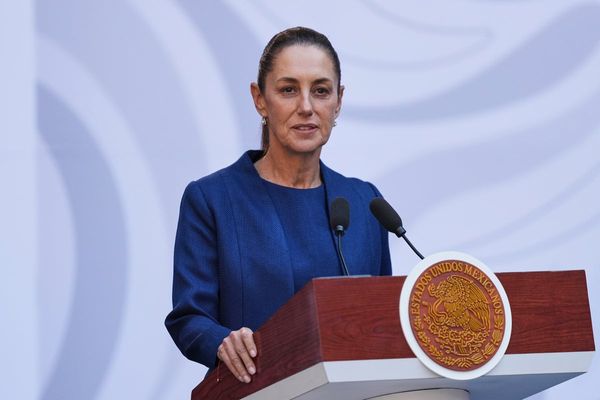For many women now in their 30s and 40s—including this one—Kate Spade’s boxy, retro-minimalist “Sam” purse was their first grown-up handbag. It was also, ever since its launch in 1993, a well-known gateway drug to the increasingly costly “It” bags that started dominating the industry in that decade. And Spade herself—the bespectacled, brunette Catholic school girl from Missouri who married her college boyfriend yet somehow managed to conquer the cooler-than-thou New York fashion scene—was precisely the woman so many of us wanted to be like when we grew up.
If we had ever forgotten this over the years, we were reminded painfully of that fact on Tuesday, when the 55-year-old Spade was found dead in an apparent suicide. Shortly after the news broke, the internet was flooded with appreciations celebrating what Kate Spade’s clothes and accessories meant for the women and girls who wore them. A common theme that emerged was how Spade’s singular designs were at once grounded and playful, both responsive to the demands of daily life and able to spark the imagination.
Even looking back a few decades, Spade’s rise to the top of the fashion industry had a kind of magical feel to it. (“Her career itself sounds something like a fairy tale,” Vogue gushed in an early profile.) After graduating from college in 1985, Spade headed east to Manhattan and landed a temp job at Mademoiselle, where she worked her way up to accessories editor. Just as the bridal-fashion pioneer Vera Wang had done a few years previously, Spade spotted a void in the market she covered, quit her magazine job, and eventually launched her own line. At the time, the ubiquitous, utilitarian black nylon Prada “Vela” backpack—the work of another nerdy-cool girl, Miuccia Prada—was chic, but it wasn’t exactly cheap. It had, however, conditioned consumers to view nylon as a luxury fabric. Spade came up with an equally practical but more affordable nylon bag, which she infused with her own vintage, feminine sensibility.
The fourth of five sisters, Spade was an unapologetically girly designer. Her purses were awash in bows, beads, polka dots, rainbow stripes, and oversized prints—a contrarian corrective to the studiously neutral palette of ’90s high fashion. Spade was photographed around town wearing twinsets, cocktail rings, and leopard coats long before Wes Anderson came to prominence and Mad Men debuted on TV. Instead of contemporary celebrities and socialites, she once cited the playwright Arthur Miller and the poet Frank O’Hara as her muses.
Meanwhile, Spade’s penchant for trompe l’oeil novelty handbags in particular harkened back to the fashion designer Elsa Schiaparelli, who collaborated with Salvador Dalí and other Surrealist artists in the 1930s to produce hats that looked like shoes and gloves with red fingernails. Spade hailed Schiaparelli as “the high priestess of color” in her 2004 book, Style. But she reserved her highest praise for another obvious influence, Bonnie Cashin, who perfected the alchemy of fashion and function in the leather bags she designed for Coach in the 1960s. “Her shapes and colors are always so clean,” Spade wrote of Cashin. “I think it’s important to remember that bright color and pattern can be very sophisticated and make you look strong.”
Like Cashin, Spade specialized in what is now known in branding-speak as “affordable luxury.” Spade’s handbags—and, later, her shoes, sunglasses, stationery, luggage, fragrances, and housewares—were still expensive, but they were attainable and unpretentious. Like their creator, they always looked enviably put-together, without seeming too serious. “Elegant doesn’t have to mean formal,” Spade once said. “A loafer can be elegant.” As a result, her whimsical accessories made young women feel like adults, as The Atlantic’s Tori Latham wrote, and adult women feel young.
Because Spade’s aesthetic was sunny rather than cerebral—and because her company was making a whopping $99 million in annual revenue by the time she sold her last stake in it in 2007—there’s a risk that she’ll be remembered primarily as a brilliant marketer, not as a brilliant designer. But she’s undoubtedly earned her place in the fashion pantheon, winning awards from the Council of Fashion Designers of America in 1996 and 1998 and being named Launch of the Year at the 1999 Footwear News Achievement Awards, better known as the “Shoe Oscars.” Her legacy can be felt today, particularly among female designers: There are Orla Kiely’s bags, with their cheerful prints and simple silhouettes; Charlotte Olympia’s fanciful footwear; and the head-to-toe modern-classic looks of Tory Burch, Jenna Lyons, and Trina Turk.
Spade managed that rare trick of being timeless as well as trendy. Rather than chasing fads, she followed her own path, walking a fine line between cute and kitsch without ever putting a foot wrong. (Post-2007, collections began to include clothing and jewelry, and were less successful at sidestepping kitsch, according to some devotees.) The short-handled “Sam” bag was relaunched earlier this year, in honor of its 25th anniversary; of course, many of us still cherish and carry our 1993 models. Although Spade was no longer associated with her namesake company by the time she died, its image remains uniquely hers: pretty and preppy, and typically American in its seamless synthesis of optimism and nostalgia. Like Lilly Pulitzer or Ralph Lauren, Kate Spade evolved from an individual to a brand to a lifestyle. At a time when her winking positivity is needed more than ever, Spade’s passing feels like the all-too-abrupt end of an era.







